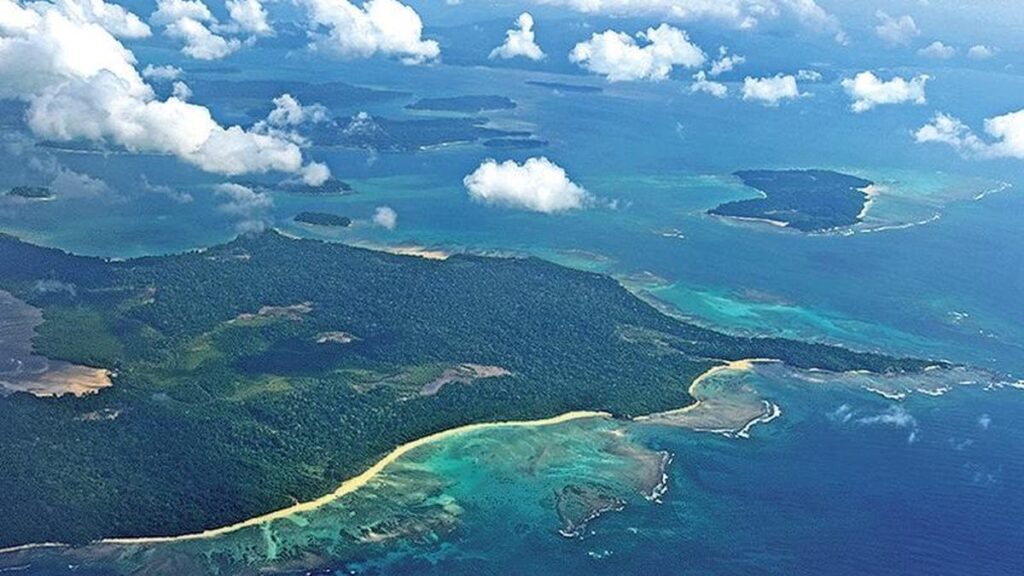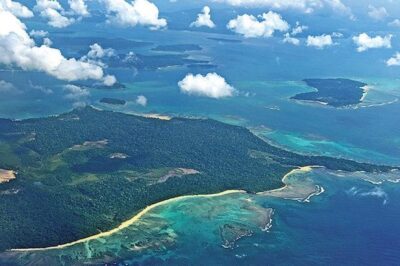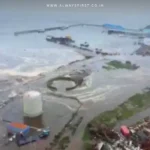
EIA Downplays Seismic Threats
The Environment Impact Assessment (EIA) for the ₹72,000-crore Great Nicobar Infrastructure Project, aimed at building a transhipment port, airport, power plant, and township, has significantly underplayed the region’s seismic vulnerabilities. Despite the Andaman and Nicobar Islands being located in high-risk seismic zone V, the EIA report presents minimal analysis of potential earthquake-triggered tsunamis akin to the devastating 2004 event.
Frequent Quakes Underscore Danger
Geological data reveals that Great Nicobar experiences around 44 earthquakes annually, with 442 recorded between 2010 and 2020, many of them mild yet frequent tremors. Notably, the 2004 undersea quake, registering a magnitude of 9+, caused permanent coastal subsidence of 3-4 meters, sinking even higher ground like Indira Point’s lighthouse. Janki Andharia, a disaster studies expert, emphasized that such seismic activity must be rigorously analysed before constructing major infrastructure.
Structural Standards vs. Comprehensive Risk Assessment
The project proponent claims structures will comply with earthquake-resistant building codes and that a disaster-management plan exists. However, strong critiques argue this response-centric approach is inadequate without a detailed, systemic risk evaluation, especially when building over active fault lines.
Environmental and Ecological Fallout
Beyond seismic concerns, vast ecological damage could arise from deforestation and coastal disruptions. The ambitious scheme involves cutting nearly 0.85–1 million trees and clearing 298 hectares of coastal seabed, including mangrove belts and coral reefs. Mangroves, essential for buffering disasters and supporting diverse ecosystems, would be heavily impacted.
Threats to Wildlife & Tribes
Important habitats face destruction, leatherback turtles nest in Galathea Bay, Nicobar megapodes dwell nearby, and rare birds and treeshrews inhabit the forests. Proposed mitigation, such as relocating wildlife or transplanting corals, is considered superficial and unrealistic, as coral transplants struggle under warming oceans and turtles will avoid disturbed beaches. Moreover, the project would gravely disrupt Indigenous communities like the Shompen and Nicobarese, violating the Andaman & Nicobar Protection of Aboriginal Tribes Regulation.
Procedural Gaps & Questionable Data
The EIA process appears marred by procedural violations. Critiques note an underqualified consultancy team, early fieldwork contradicting official timelines, missing citations, incorrect species counts, and ocean ecosystem inconsistencies. These flaws cast doubt on the reliability of impact predictions.
Government’s Balancing Act
Government officials defend the project, citing national and defence interests and stating that 82% of the island will remain protected forest, biosphere zones, or eco-sensitive regions. EIA clearance and management plans are purportedly in place, with compensatory afforestation planned in mainland states like Haryana and Madhya Pradesh. However, the effectiveness of remote afforestation and distant compensatory measures remains critically questioned.
Warnings from Environmental Experts
Experts have urged re-evaluation. Andharia and colleagues warn of possible oil spills and ecological catastrophes resulting from quake-induced infrastructure failure. Conservation groups argue the EIA disregards climate change, disaster risk, tsunami history, and lacks a Coastal Zone Management Plan.
Ethical and Legal Concerns
There are serious ethical and legal concerns: tribal councils were not adequately consulted, violating constitutional protections. Tribal approvals were allegedly coerced and later withdrawn. Conservationists assert the EIA reduced itself to a “tick-box” formality.
Weighing Progress Against Preservation
Proponents argue the project will bolster maritime infrastructure, strategic security, economic development, tourism, and renewable energy. But environmentalists caution that sacrificing irreplaceable biodiversity and weakening natural disaster resilience in pursuit of development risks long-term consequences. They argue real growth depends on aligning with global conservation commitments, not undermining them.
Moving Forward: Calls for Reassessment
As India leads the global Coalition for Disaster Resilient Infrastructure, critics argue the GNIP must follow suit with a risk-informed design. Many voices now call for a transparent and independent re-evaluation of seismic and ecological risks before proceeding.
Conclusion: A Cautionary Tale
The Great Nicobar Infrastructure Project represents a clash between large-scale developmental ambition and the urgent need for hazard-aware planning. In a tectonically volatile region that has already witnessed devastating subsidence and tsunami devastation, concrete, science-based risk analysis is essential. Without addressing these seismic threats, the project could irreversibly impact both people and nature. The question now is not only whether India can build, but whether it can do so wisely and sustainably.









































Leave a Reply